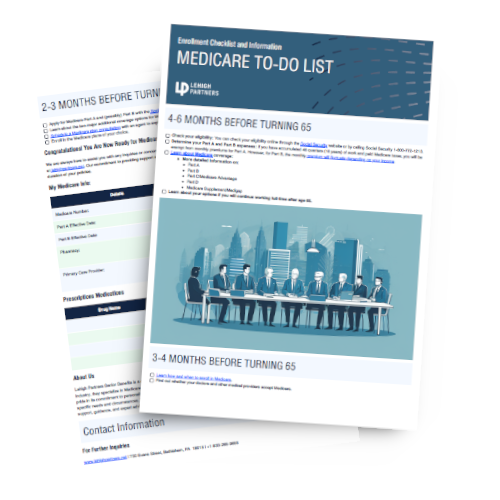
eady to enroll in Medicare? We've got you covered. Discover step-by-step instructions and tips for a seamless Medicare enrollment process.
- If you are receiving Social Security retirement benefits or Railroad Retirement benefits, you should be automatically enrolled in both Medicare Part A and Part B.
- If you are not receiving Social Security retirement benefits or Railroad Retirement benefits, you will need to actively enroll in Medicare.
If you are eligible for automatic enrollment, you should not have to contact anyone. You should receive a package in the mail three months before your coverage starts with your new Medicare card. There will also be a letter explaining how Medicare works and that you were automatically enrolled in both Parts A and B. If you get Social Security retirement benefits, your package and card will come from the Social Security Administration (SSA). If you get Railroad Retirement benefits, your package and card will come from the Railroad Retirement Board.
Typically, you should not turn down Part B unless you have insurance based on your or your spouse’s current work (job-based insurance). If you do not have job-based insurance and you turn down Part B, you may incur a premium penalty if you need to sign up for Medicare coverage in the future. Also, if your job-based insurance will pay secondary after you become eligible for Medicare, you should consider enrolling in Medicare in order to have primary coverage and pay less for your care.
If you are 65 but are not receiving Social Security retirement benefits or Railroad Retirement benefits, you will need to actively enroll in Medicare.
How to Enroll in Medicare
Signing up for Medicare
Follow the steps below if you need to actively enroll in Medicare.
If you decide to enroll in Medicare during your Initial Enrollment Period, you can sign up for Parts A and/or B by:
- Visiting your local Social Security office
- Calling Social Security at 800-772-1213
- Mailing a signed and dated letter to Social Security that includes your name, Social Security number, and the date you would like to be enrolled in Medicare
- Or, by applying online at www.ssa.gov
If you are eligible for Railroad Retirement benefits, enroll in Medicare by calling the Railroad Retirement Board (RRB) or contacting your local RRB field office.
Keep proof of when you tried to enroll in Medicare, to protect yourself from incurring a Part B premium penalty if your application is lost.
- Take down the names of any representatives you speak to, along with the time and date of the conversation.
- If you enroll through the mail, use certified mail and request a return receipt.
- If you enroll at your local Social Security office, ask for a written receipt.
- If you apply online, print out and save your confirmation page.
Your coverage options
Once you’ve signed up for Part A (Hospital Insurance) and Part B (Medical Insurance), you can choose which way you get your health coverage.
Question 1: Do you want Original Medicare or Medicare Advantage?
There are 2 main ways to get your Medicare coverage – Original Medicare and Medicare Advantage.
Original Medicare | Medicare Advantage (Part C) |
|---|---|
Includes: | Includes: |
Part A |
Part A |
Part B |
Part B |
You can add: | Most plans include: |
|
|
Medicare drug coverage (Part D) | Medicare drug coverage (Part D) |
| Cell |
Supplemental coverage (to help pay your share of costs): Medicare Supplement Insurance (Medigap), coverage from a former employer or union, or Medicaid | Some extra benefits (that Original Medicare doesn’t cover – like vision, hearing, and dental services) You must have both Part A and Part B to join a Medicare Advantage Plan. |
How Medicare Advantage Works
Medicare Advantage (Part C) is an alternative way to receive your Medicare benefits, combining the coverage of Medicare Parts A and B into one comprehensive plan. It provides additional benefits beyond what Original Medicare offers, often including prescription drug coverage (Part D), and may include extra benefits like dental, vision, hearing, and fitness programs.
To be eligible for Medicare Advantage, you must first enroll in Medicare Parts A and B. Once enrolled, you have the option to choose a Medicare Advantage plan provided by private insurance companies approved by Medicare.
One of the main advantages of Medicare Advantage is the comprehensive coverage it provides. These plans must cover all services covered under Original Medicare (Parts A and B). This includes hospital stays, doctor visits, preventive care, and medically necessary services. However, Medicare Advantage plans often have their own network of doctors and hospitals, so it's important to ensure your preferred healthcare providers are included in the plan's network.
In addition to the standard benefits of Original Medicare, Medicare Advantage plans may also offer extra benefits. These extra benefits vary depending on the plan and insurer, but they can include prescription drug coverage, routine vision and dental care, hearing aids, transportation services, fitness programs, and other wellness benefits. It's important to review the details of each plan to understand the specific extra benefits they offer.
Medicare Advantage is a popular choice for those looking for more comprehensive coverage while still being part of the Medicare program. It provides an opportunity to receive additional benefits beyond what Original Medicare provides, potentially saving you money on out-of-pocket expenses and simplifying your healthcare coverage.
Limitations of Original Medicare
Original Medicare has certain limitations and requires you to pay co-pays for some services. These limitations include:
- Lack of coverage for prescription drugs: Original Medicare (Parts A and B) does not cover most prescription drugs, except in limited circumstances. To obtain prescription drug coverage, you would need to enroll in a separate Medicare Part D plan or consider a Medicare Advantage plan that includes prescription drug coverage.
- No out-of-pocket spending limit: Original Medicare does not have an annual out-of-pocket spending limit for covered services. This means that if you have significant healthcare needs, you may be responsible for significant co-pays and other cost-sharing expenses throughout the year. In contrast, Medicare Advantage plans typically have an annual out-of-pocket maximum, which can provide financial protection against excessive healthcare costs.
- Limited coverage for certain services: Original Medicare may not cover some services, such as routine dental, vision, hearing care, and long-term care. These services are often important for seniors but may require additional insurance coverage, such as Medicare Advantage plans or separate dental and vision plans.
- Restrictions on seeing providers: With Original Medicare, you have the freedom to see any healthcare provider who accepts Medicare. However, there may be limitations on coverage for providers who do not accept assignment, which could result in higher out-of-pocket costs. Some Medicare Advantage plans have a network of preferred providers, and if you choose to see providers outside of that network, you may face higher costs or limited coverage.
It's important to carefully consider these limitations and understand your healthcare needs when deciding between Original Medicare and alternative options, such as Medicare Advantage or supplemental insurance plans.
Question 2: If you picked Original Medicare, do you want to add more coverage?

Medicare drug coverage (Part D)
If you chose Original Medicare and want to add drug coverage, you can join a separate Medicare drug plan. Medicare drug coverage is optional. It’s available to everyone with Medicare.
Most Medicare Advantage Plans include Part D coverage. In most types of Medicare Advantage Plans, you can’t join a separate Medicare drug plan.
Plans cover a variety of brand-name and generic prescription drugs. Each plan has a list of covered drugs, called a “formulary,” that can vary in cost and specific drugs covered.
- Most plans have a monthly premium that you pay in addition to your Part B premium. You’ll also pay other costs when you get prescriptions.
- Plans divide the covered drugs on their formulary into groups called "tiers" based on cost. A drug in a lower tier will cost less than a drug in a higher tier.
You may pay a Part D late enrollment penalty if you don’t join a Medicare drug plan when you first get Medicare and go 63 days or more without creditable drug coverage. The penalty goes up the longer you wait to join a plan. In most cases, you pay this monthly penalty for as long as you have Part D coverage, even if you switch plans.

Medicare Supplement Insurance (Medigap)
Medicare Supplement Insurance (Medigap) is extra insurance you can buy from a private company that helps pay your share of costs in Original Medicare.
- You need both Part A and Part B to buy a Medigap policy.
- Some Medigap policies offer coverage when you travel outside the U.S.
- Generally, Medigap policies don’t cover long-term care (like care in a nursing home), vision, dental, hearing aids, private-duty nursing, or prescription drugs.
- If you’re under 65, you might not be able to buy a Medigap policy, or you may have to pay more.
Medigap policies are standardized, and in most states named by letters, like Plan G or Plan K. The benefits in each lettered plan are the same, no matter which insurance company sells it.
Price is the only difference between policies with the same letter sold by different companies.
Get the lowest price
If you don’t buy a Medigap policy within 6 months of when you first get both Part A and Part B, you may not be able to buy a policy or you may pay more.
Talk to an Agent about your Medicare Choices
Discover the peace of mind that comes with expert guidance. Talk to a Medicare insurance agent to maximize your coverage and save money.






